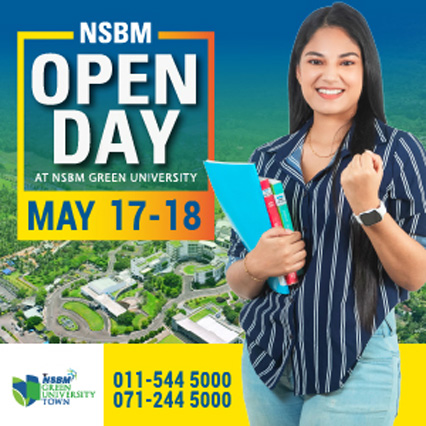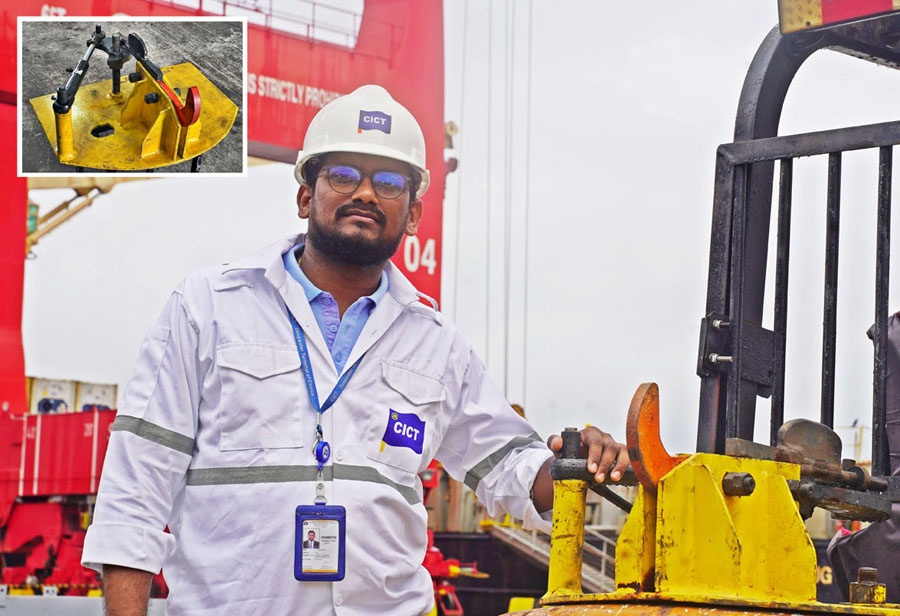A hydraulically-operated quick-release hook invented by CICT’s Senior Engineer Charith de Silva enables a fork lift operator towing a mooring rope that can weigh as much as a ton to be looped over a bollard, to instantly release the rope if the operator feels a pull in the opposite direction, preventing the forklift and possibly its operator being dragged into the sea by the ship’s movement.
The cleverly-designed quick-release hook installed on the counterweight behind the driver’s seat integrates with the forklift’s own hydraulic valve box, making it operable via the standard functional levers used by the operator to manipulate the machine, and enabling a split-second release of the mooring rope if necessary.
Costing just Rs 400,000 to fabricate and install, the quick-release hook is to be fitted on four three-ton forklifts at CICT, and its inventor says he will make the design available to other port operators free of royalty, as its purpose is the safety of port workers and their equipment.
“This hook is particularly important when mooring the very large ships that call at CICT,” Mr de Silva said.
“Their mooring ropes are very strong and heavy and cannot be dragged and tied to a bollard manually, so we have to use forklifts to tow the ropes.
But if a rope is accidently winched back during the process, or the ship’s movement pulls the rope back, the forklift can be dragged along.
This is the risk we set out to eliminate.”
“We came across multiple options in our research, but we wanted to find an in-house solution that was cost-effective, durable, reliable and safe, and most of all, as simple as possible to implement with existing materials and equipment within our terminal,” he added.
“I am grateful to my team for all the inputs and to the management of CICT for the opportunity and the encouragement I received to look for a home-grown solution to a problem that is common to most terminals.”
Congratulating the inventor of the quick-release hook and his team, CICT CEO Mr Jack Huang said:
“Safety and efficiency are bywords for us, and we are constantly looking for ways to improve processes through innovation and technology.
Our engineers are an excellent example of this approach and are an inspiration to their counterparts.
We look forward to more innovations from them.”
CICT manages the South Terminal of the Port of Colombo, the first and only operating deep-water terminal in South Asia, which is equipped with facilities to handle the largest vessels afloat.
Since its inception in 2014, the terminal has incrementally grown the volume it has handled; from 686,639 teus in 2014, to just over 3.2 million teus in 2021.
CICT is the flagship overseas terminal of China Merchants Port Holdings Company Limited (CMPort).
CMPort is the largest and a globally-competitive public port developer, investor and operator in China with investments in Mainland China, Hong Kong and overseas.
CMPort has a port network portfolio spanning 50 ports in 26 countries and regions.
Guided by the vision "To be a world class comprehensive port service provider” and supported by its domestic, overseas and innovation strategies, CMPort strives to strengthen its core competencies in global throughput, port service and management.
Photo Caption CICT’s Senior Engineer Charith de Silva (above) with the quick-release hook he invented (inset) and (below) a forklift with the hook installed.
























